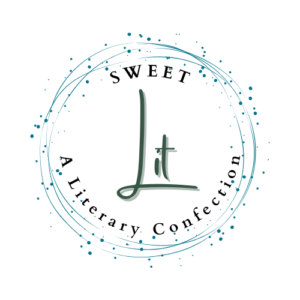Lisa Laughlin is Sweet‘s 2017 Flash Nonfiction Contest Winner. Her chapbook Kindling includes three essays, focused on nature and various ways humans interact and connect to it. Below she answers questions on how she decides what she wants to share in her writing, the nature essay’s role modern-day society, the hardest part of the writing process, and more! Be sure to pick up a copy of her chapbook while they’re still available!
In “A Sort of Trespass” you recount the memory of your brother finding an arrowhead and your father urging you to not tell “those people” it was found on the land because it would risk attracting more visitors. You also confess your hesitation to write about this peaceful piece of land. What changed your mind and as a writer how do you decide on what to share in your writing and what to keep secret?
I think a lot about ownership, memory, and land. I think about how my homesteading great-grandfather put a claim on a certain number of acres, and, in many definitions, made it his own: he worked the soil, struggled against the environment, and carved out a living for himself. When things like arrowheads surface after erosion, it’s a natural reminder of all the people who inhabited the land before the farmers. I felt compelled to make a gesture toward that complication in my writing.
In modern days, we create fences and boundaries and property lines, but what do those really mean for the land? I like exploring the balance of respecting a place we “own” by remembering that our claim on it is temporary. The thought of claiming land, even if it’s something like claiming familiarity through hiking, seems to bring up ideas of exploitation for me. I can’t stand people who visit beautiful places just to get a good Instagram picture; that being said, I take pictures of beautiful places and Instagram them.
I write at the end of “A Sort of Trespass” that I know who “those people” are as self-implication: I am one of those people. I’m someone who takes from nature, whether it’s a memory, a resource, or a physical object like an arrowhead. Writing about taking those things was complicated—it risked exploitation if I romanticized the taking. On the other hand, I wanted to romanticize it, to pay tribute to a place of such harsh and arid beauty that grounded me.
It’s not like there was an actual secret I felt I had to keep after the experience of finding the arrowhead. The place just seemed so complicated I was afraid words would fail me. The land doesn’t have a voice to say whether you’ve accurately defined it. At the end of the day, if it’s something that tugs and buzzes at the back of my mind, I write about it.
“Ordinary Claims” explores the idea of taking jasper and gold from the land. What’s your favorite thing you’ve claimed from nature? And why?
I struggle with the idea of “claiming” things from nature because so much of what I write explores the idea of ownership and land. Joan Didion writes that “a place belongs forever to whoever claims it hardest, remembers it most obsessively, wrenches it from itself, shapes it, renders it, loves it so radically that he remakes it in his image.” And I think there’s a lot of truth in that. The favorite things I’ve taken from nature are intangible—memories, experiences or smells that I cling to and reshape to make meaning of my life moving forward.
That being said, I still have the impulse to collect rocks, shells, and other bits from nature that I can physically carry with me to different times and places. I treasure a jade plant that was snipped from a bigger plant that was once my great-aunt’s, the iris bulbs I took from my parent’s backyard, and a bundle of dried wheat from my last day working wheat harvest. It comes down to collecting things from nature that I’ve anchored personal stories too.
 A lot of your writing focuses on “human connection to the land and nature.” I’m curious about your thoughts on the role of the nature essay in modern day society where it seems people are more inclined to stay indoors.
A lot of your writing focuses on “human connection to the land and nature.” I’m curious about your thoughts on the role of the nature essay in modern day society where it seems people are more inclined to stay indoors.
The nature essay still gets a bad rap. Some people assume a nature essay will be boring, or won’t relate to them, or will be less dynamic than an essay based on people or ideas. A good nature essay makes whatever topic it’s exploring relevant to any person, even one who prefers to stay indoors. I think the basic and most important function of a nature essay is to inspire people to pay attention to the world around them. It can inspire good stewardship of the environment or empathy for people who deal with natural disasters, but those things should come naturally when someone starts to pay attention to whatever slice of the natural world they inhabit.
Essays that inspire me to pay attention to place are pieces like Mary Oliver’s “Waste Land: An Elegy,” E.B. White’s “Once More to the Lake,” Gretel Ehrlich’s “The Solace of Open Spaces,” or Jo Ann Beard’s “Coyotes.” I’m most interested in nature essays that explore the relationship between humans and the land, the constant tug-of-war, but other nature essays like “Once More to the Lake” use a close examination of a place as a springboard to talk about mortality. A good writer can always make the mundane meaningful. If someone sees nature as mundane, a nature essay should inspire them to reflect on the rest of the world.
In “Kindling” you write about the forest fires in a very apocalyptic manner. If an apocalypse were to occur in the future do you think it’ll start with a natural disaster, Mother Nature revolting, human hubris, or a mix of everything?
I really have no idea. I kind of live expecting an apocalypse every day, and I think that feeling is impossible to avoid if you’re paying attention to the world. When I see simple things like trash on a hiking trail I often feel an overwhelming snowball effect. I think about islands of trash in the Pacific Ocean and all the harm that humans are doing to our environment. I think about Silent Spring by Rachel Carson. There are already intense natural disasters—the wildfires sweeping the West each summer, the hurricanes hitting one after another on the East coast. I went to a talk recently where an astronaut shared photos of deforestation in Brazil and smog over China, both of which can be seen from space. The last Northern White Rhino male just died, so that feels damn depressing too. All of this is news and not news. Terrible and good things going on every day. I guess this is a long way of saying that it’s all connected—natural and man-made disasters—and it seems inevitable that we’ll spiral out of control. The scariest thing is that the apocalypse will happen slowly.
In “Kindling,” what was the hardest part of the writing process for you?
The essay “Kindling” was initially inspired by Joan Didion’s essay “Miami.” I love how she establishes a sense of place through an account of details. She uses specifics to pin down an intangible feeling. Sometimes, the truest definition of a place or time is the most impossible to describe. I felt that way about the summer I spent in Ephrata when everything seemed to be on fire. I was witness to incredible loss that I found difficult to define. Reporting on specifics helped me approach it, and it was interesting to dig into the details of that summer via research—all of the water-related deaths in contrast with the extreme heat of that summer, the specific names of the fires that year, etc. It was a time when I felt disoriented, so when I went to write about it I chose details that were naturally contradictory. What was challenging about this piece was pushing it to mean something universally. I took a draft to my mentor that was essentially the first half of the essay (which I considered to be a collage, and nearly finished) and she said, “So what’s next? This is only the beginning.” After I picked my writer ego up from the floor, I dug into the essay in a way I wouldn’t have if someone hadn’t said, “So what?”
Sometimes we need to hear those things. The hardest part was working toward the turn in the essay that goes from a wide lens to the personal: So there were many instances of loss and death and fire that summer—So what? What did witnessing that loss mean to me? How did it affect my perception of the most important thing in life, in the inevitability of losing the ones I love? It was hard to go there as a writer, but once I did I knew it’s where the essay needed to go.
Who or what is inspiring you right now? This could be anything!
Right now, I’m inspired by The Shepherd’s Life by James Rebanks, and by gardening. After growing up on a wheat farm I lived in apartments for eight years, and I recently moved to a place where I have a yard. For me, it’s been more than just getting a yard because it’s a move to put down serious roots in a place that’s very different from the land I grew up in. I’m learning about the plants in Spokane—what comes naturally in the damp, sandy soil of my backyard scattered with pine trees rather than the arid soil of my sagebrush hometown. It feels like pioneering a new terrain on the micro level; I have snails here! I have no idea what to do with snails. And I know someday that everything about my new terrain will feel old, but for now, it feels nuanced and ripe with inspiration. It’s gotten me thinking about how I interact with land in a suburb, about boundaries, and about how we develop intimacy by learning the names of the natural flora.
As for the book, it’s one of my all-time favs—it’s the one I go back to when I lack inspiration. With Rebanks’ words, I’m transported back to the feeling of being on a farm, of having my day-to-day life governed by the seasons, and to the struggle of carrying on family knowledge in a modern world. I’ve never been to England, I’ve never met a shepherd, and the only sheep I’ve ever petted was at the County Fair—somehow, I still feel a deep connection with the book. It’s fantastic stuff.



